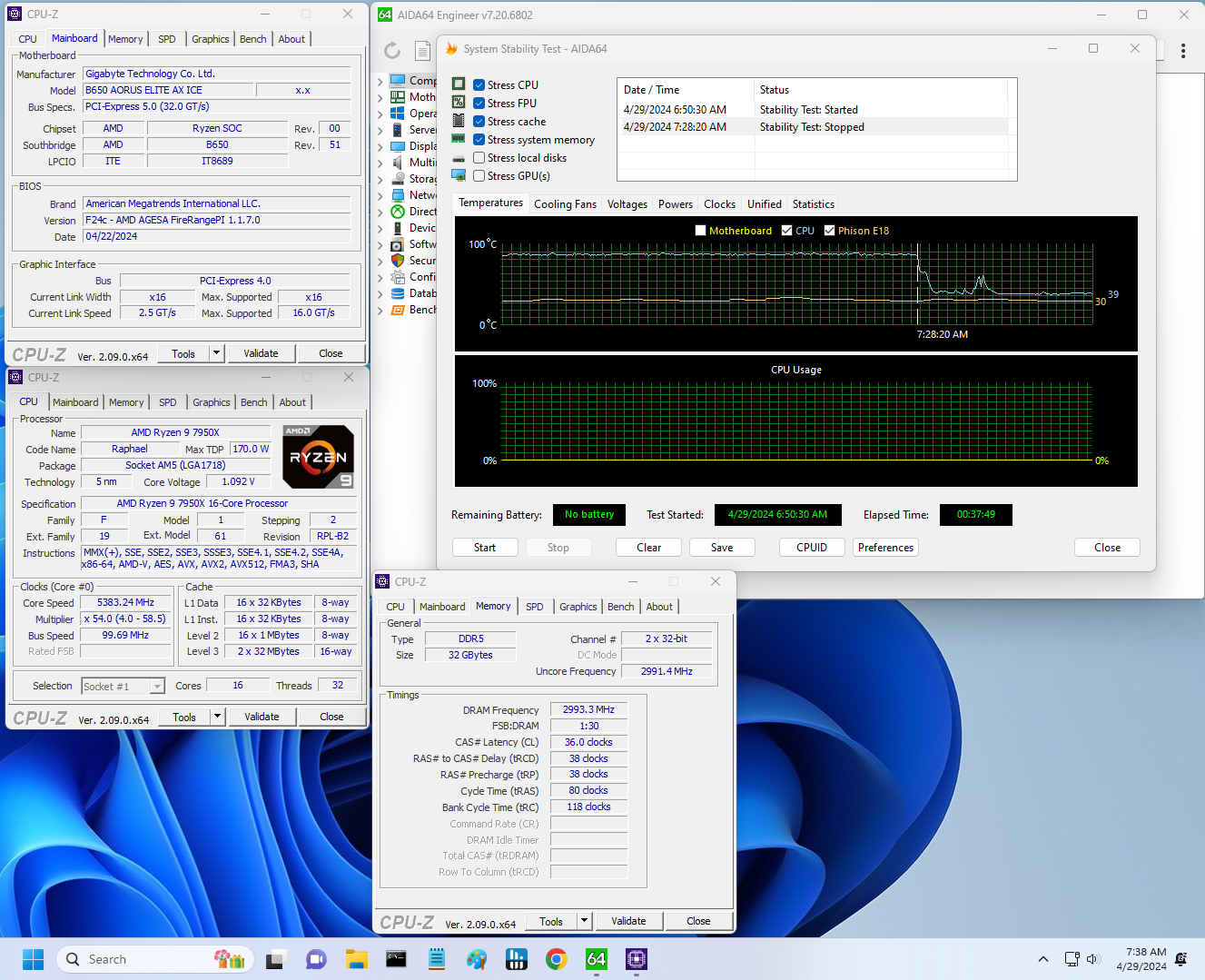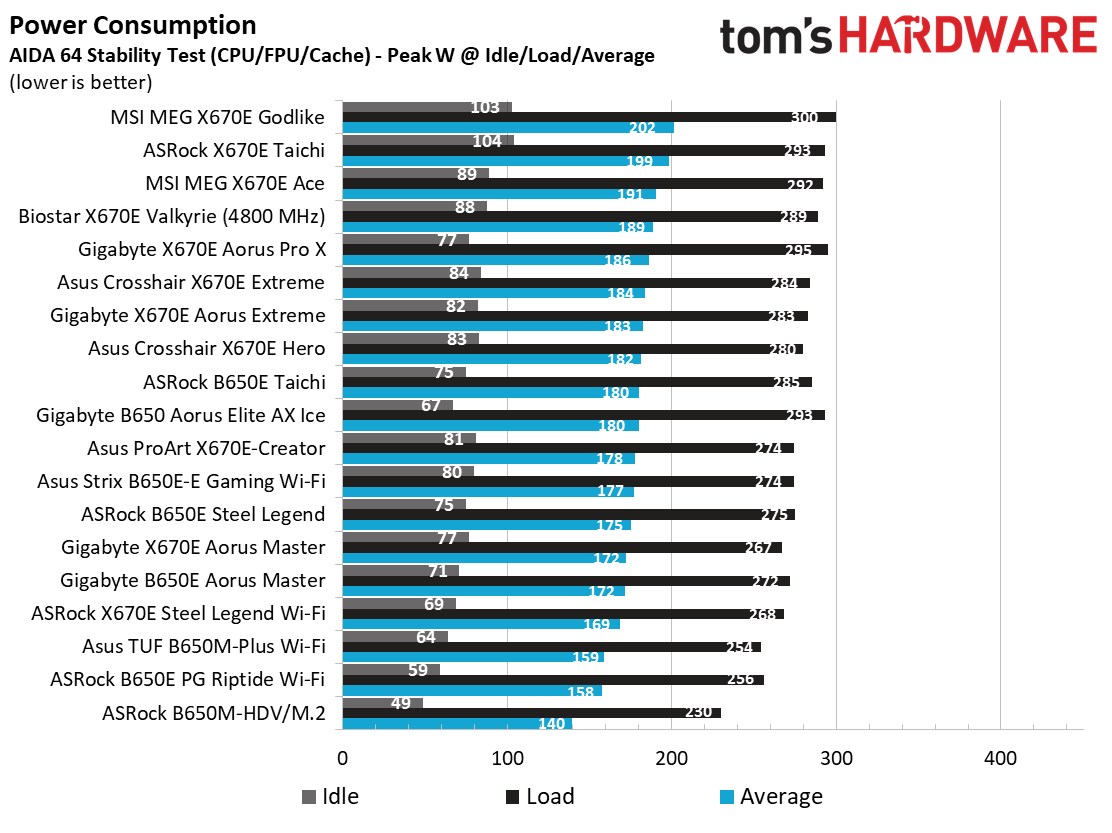Why you can trust Tom's Hardware
Our standard benchmarks and power tests are performed using the CPU’s stock frequencies (including any default boost/turbo) with all power-saving features enabled. We set optimized defaults in the BIOS and the memory by enabling the XMP profile. For this baseline testing, the Windows power scheme is set to Balanced (default), so the PC idles appropriately.
Synthetic Benchmarks
Synthetics provide a great way to determine how a board runs, as identical settings should produce similar performance results. Turbo boost wattage and advanced memory timings are places where motherboard makers can still optimize for stability or performance, though, and those settings can impact some testing.
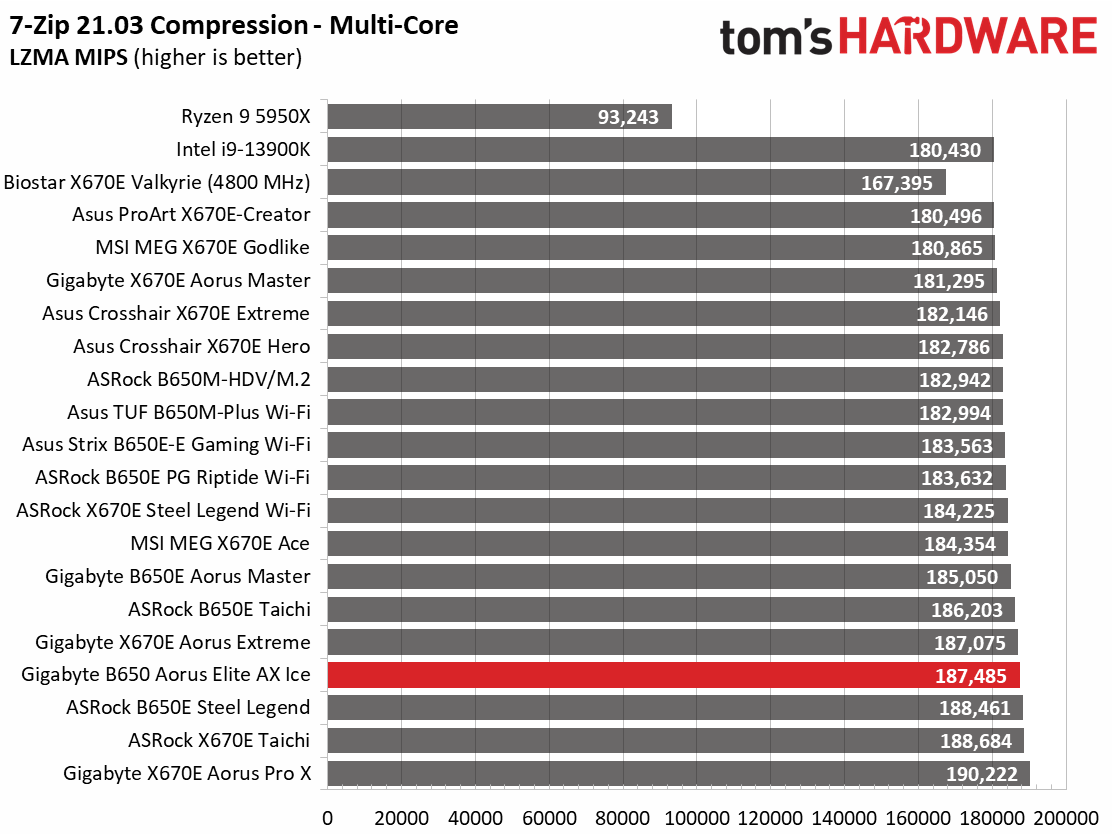

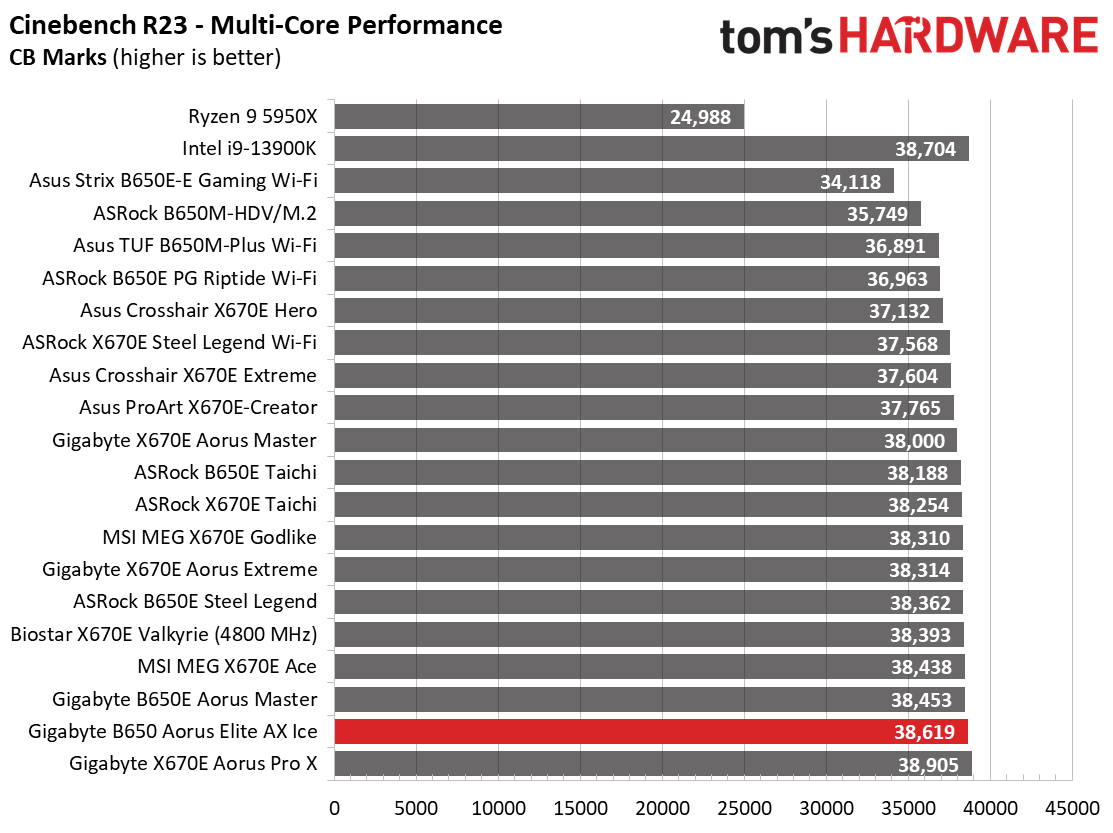
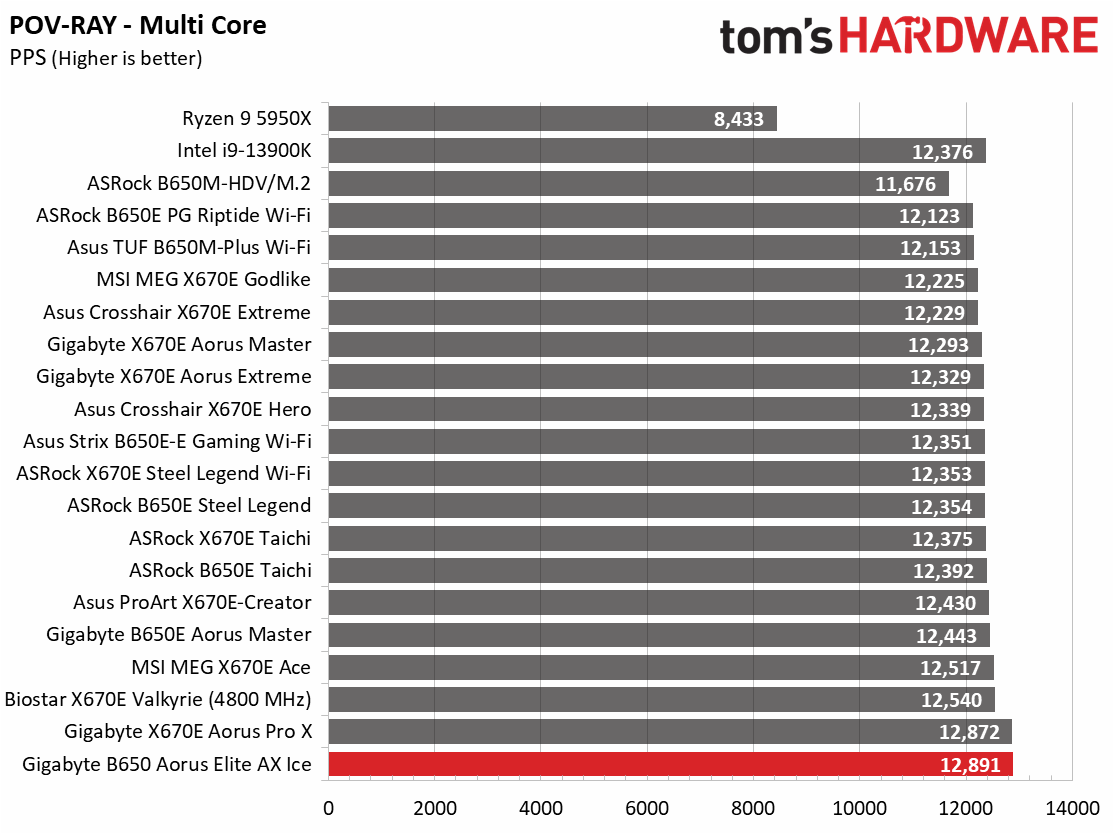
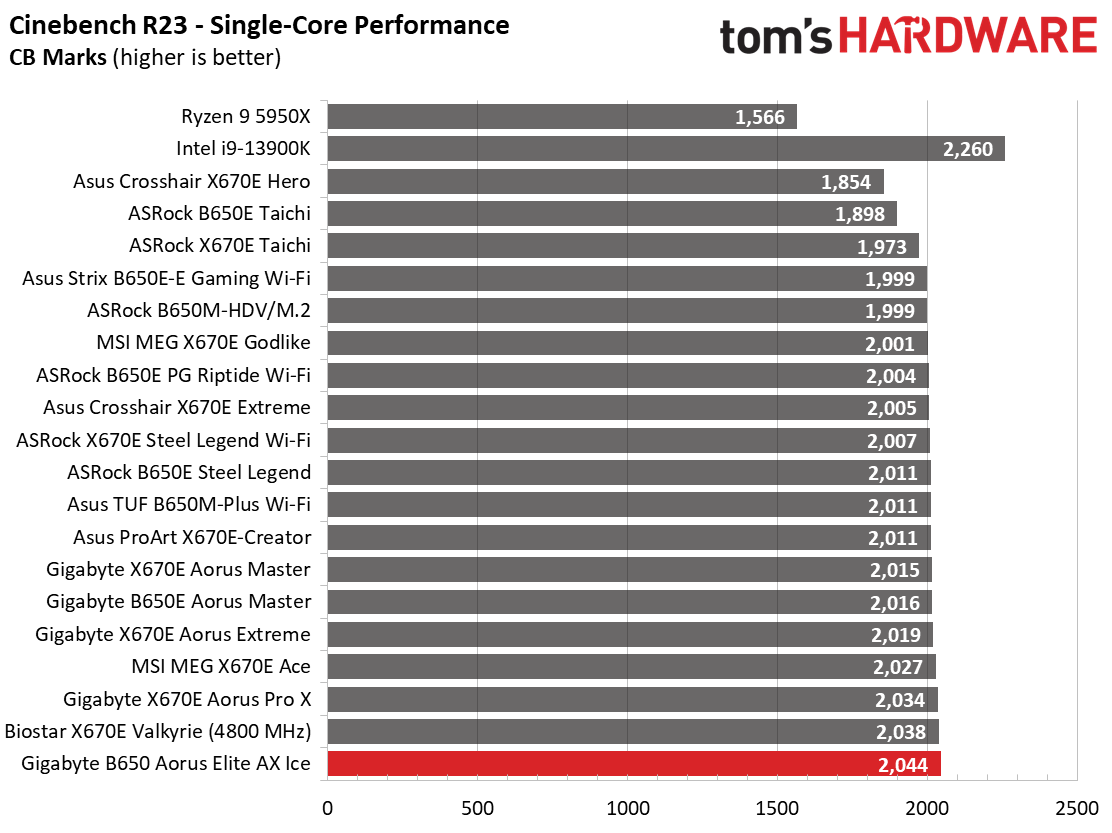

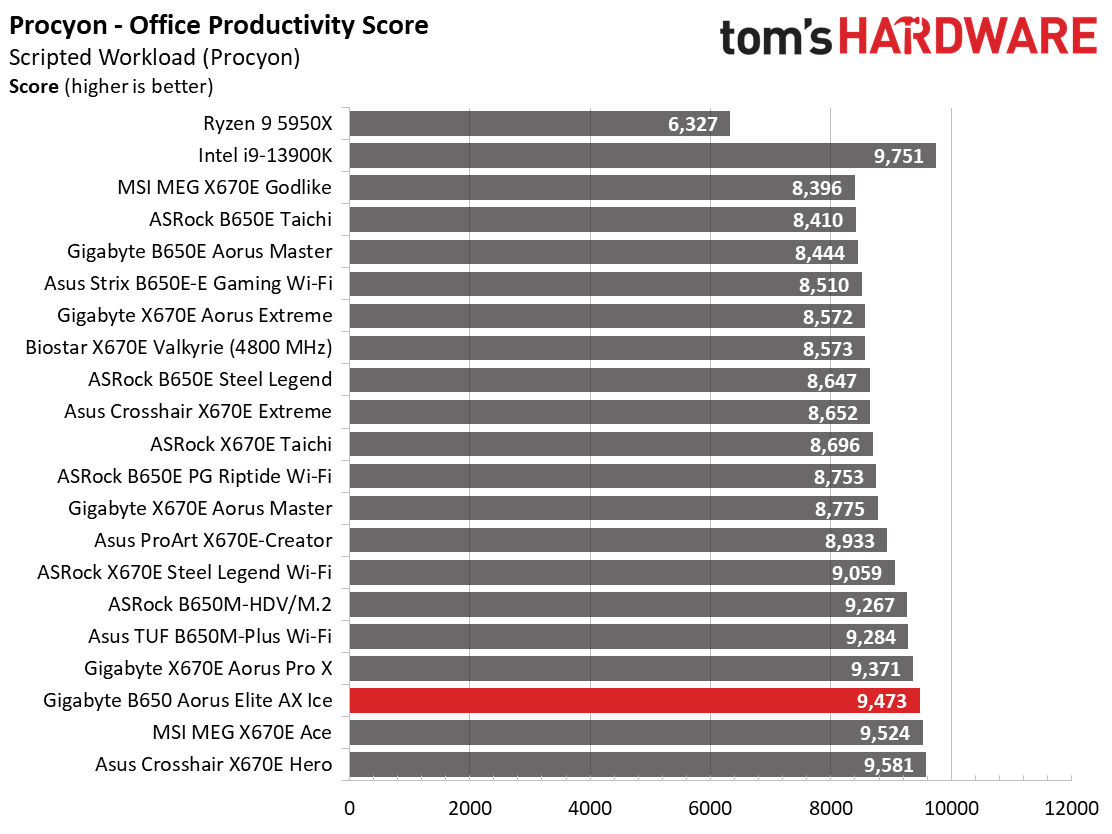
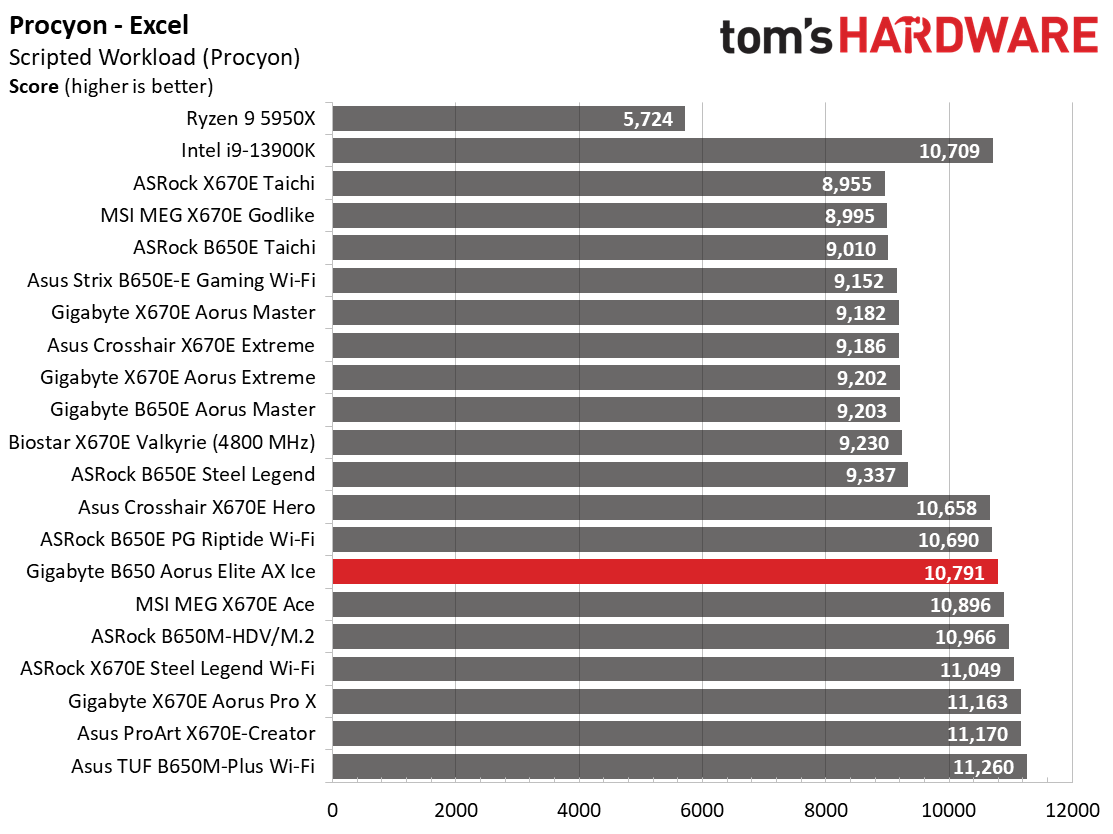
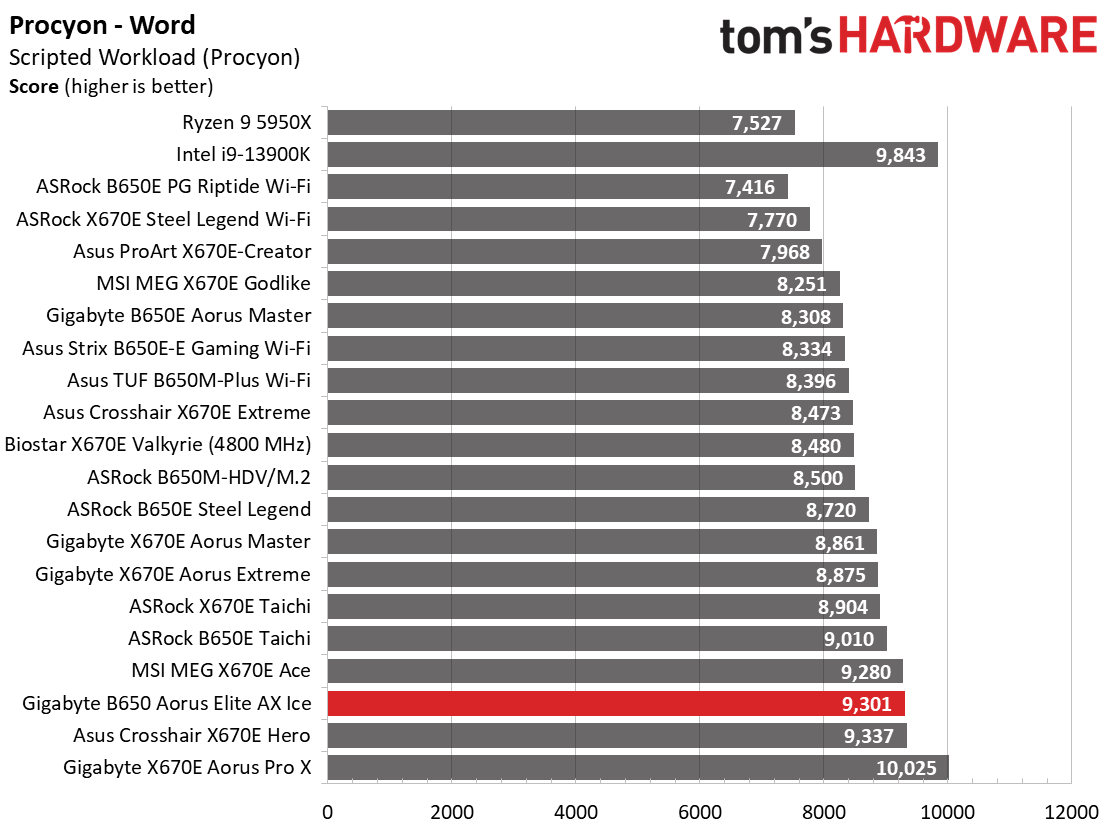
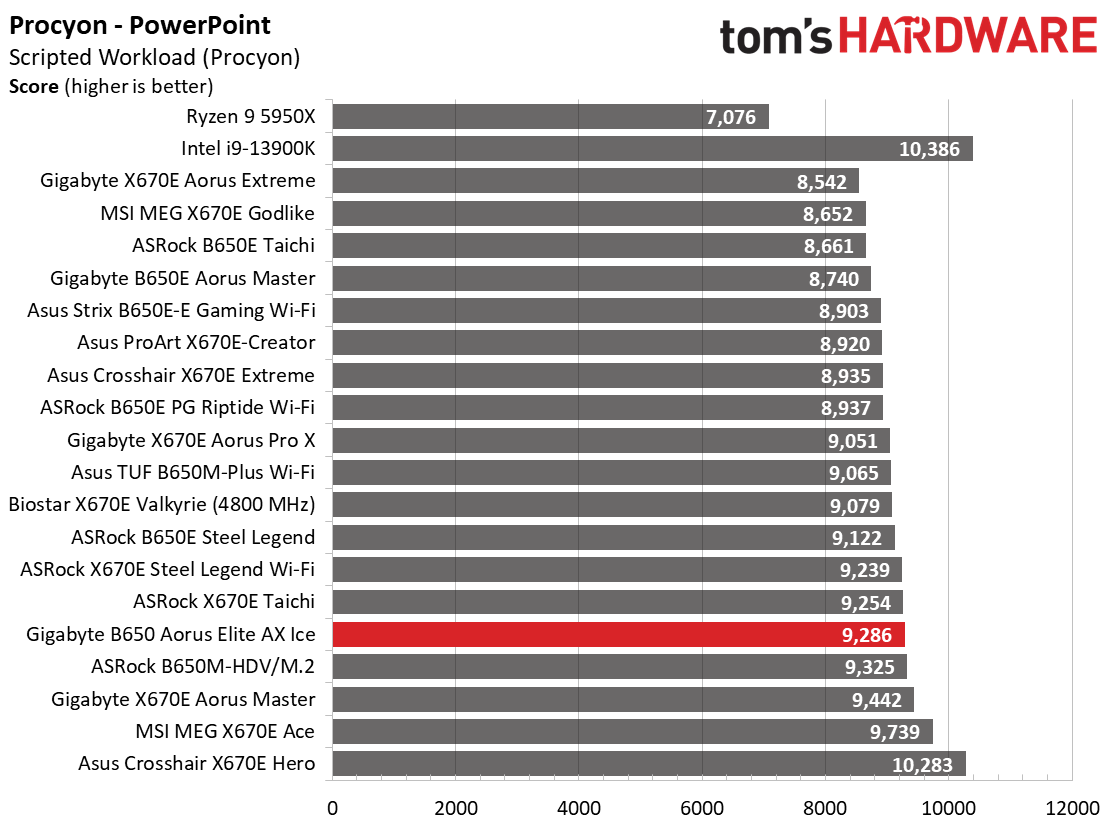
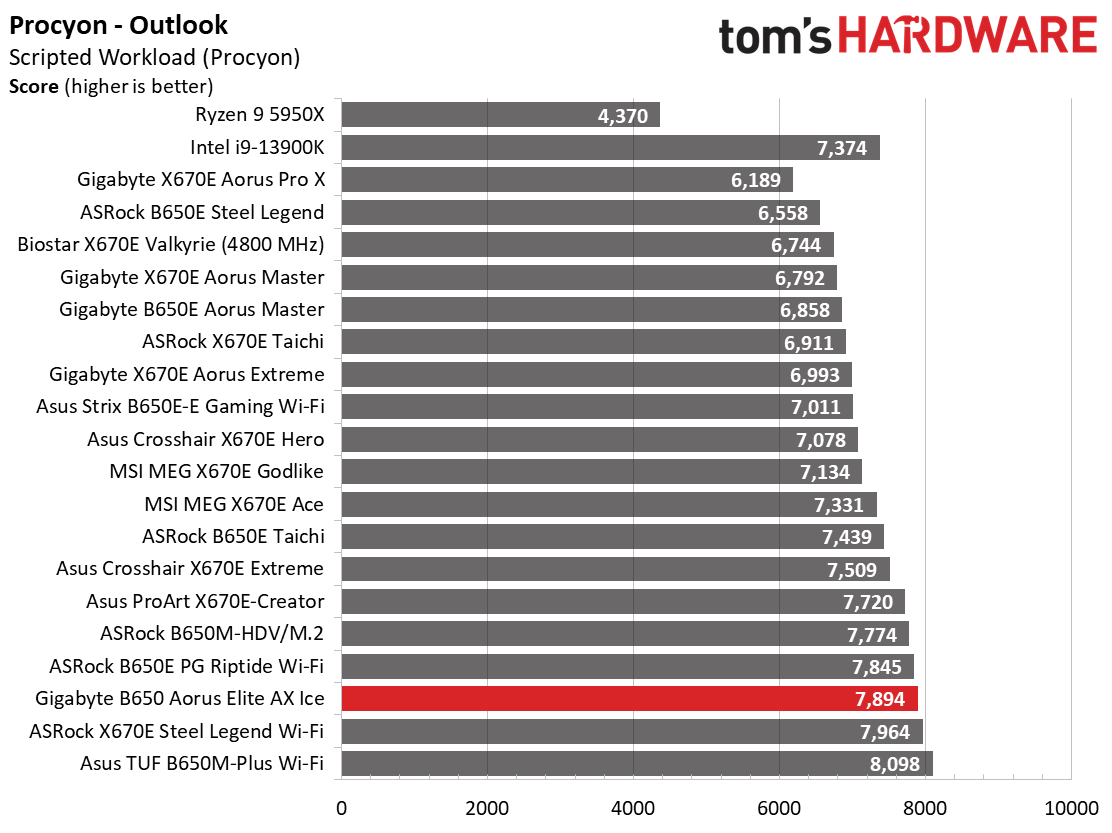
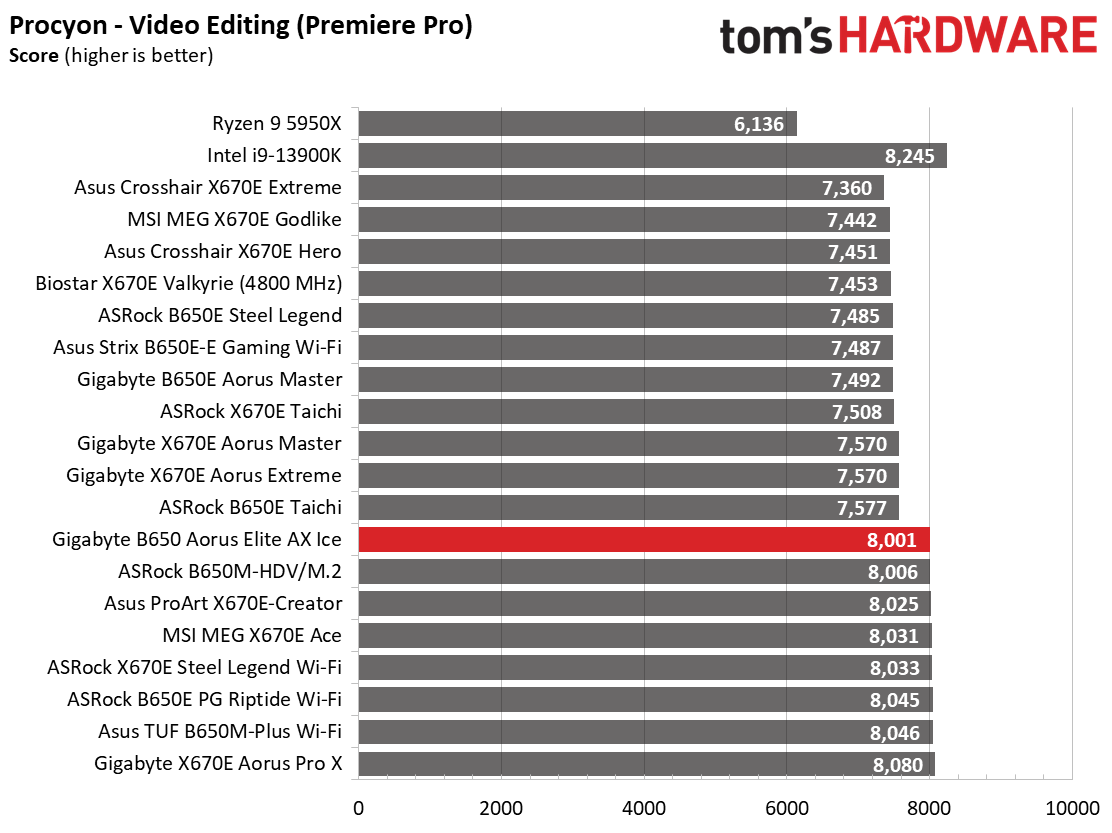

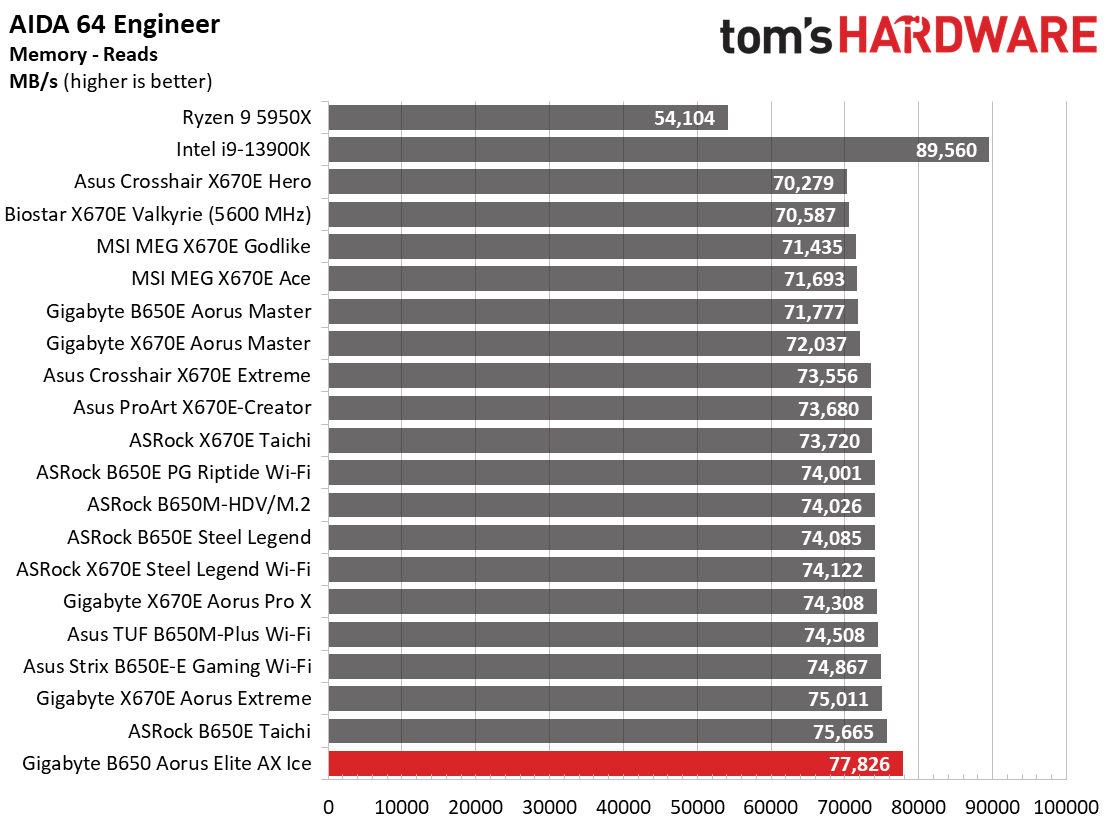
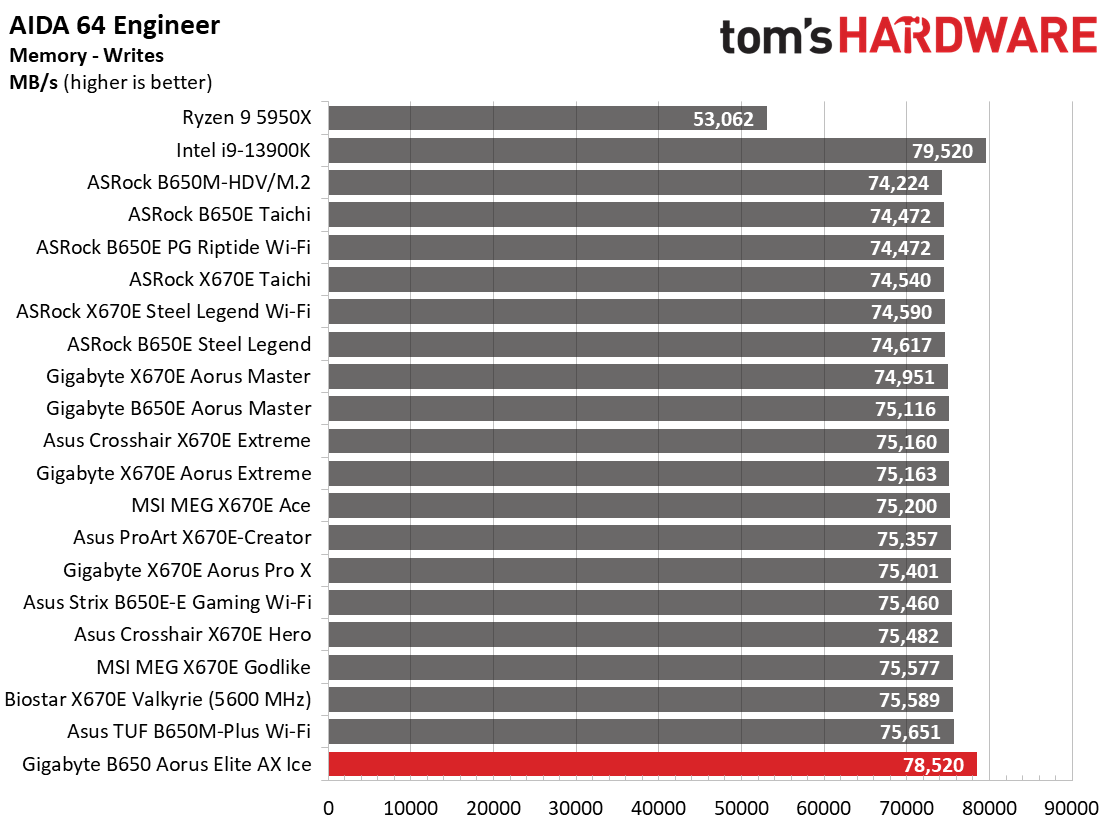
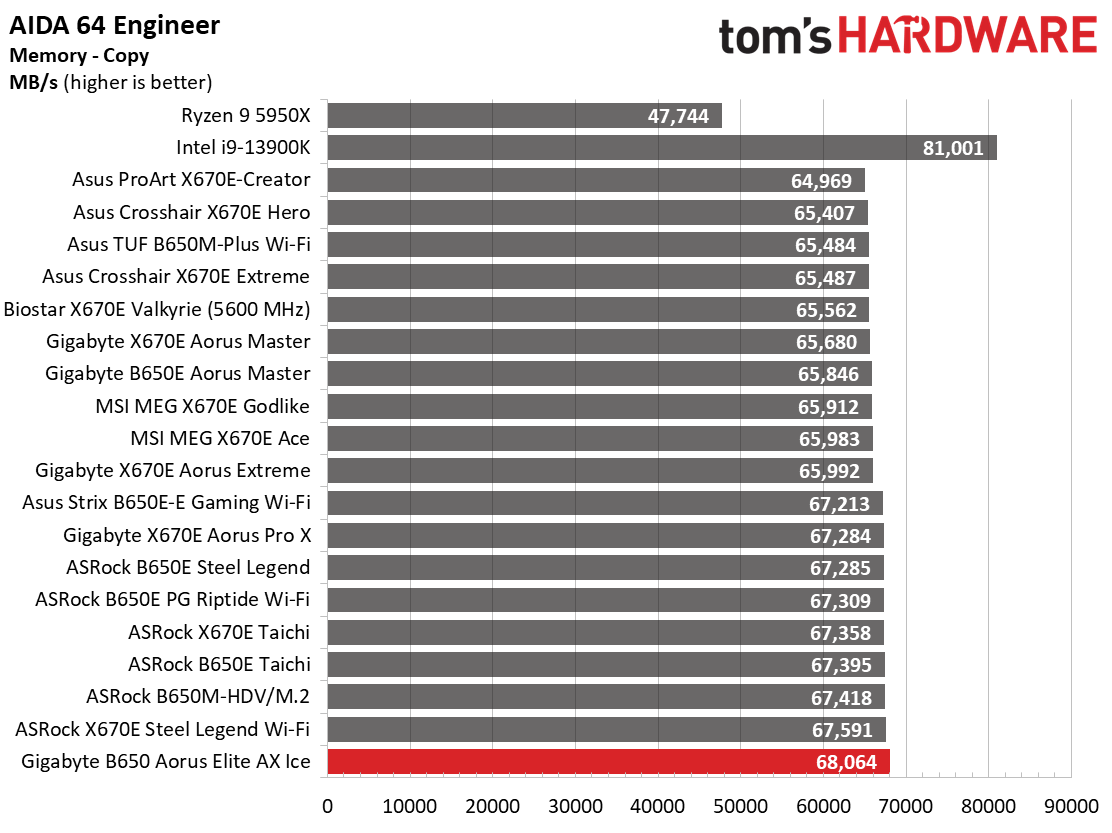
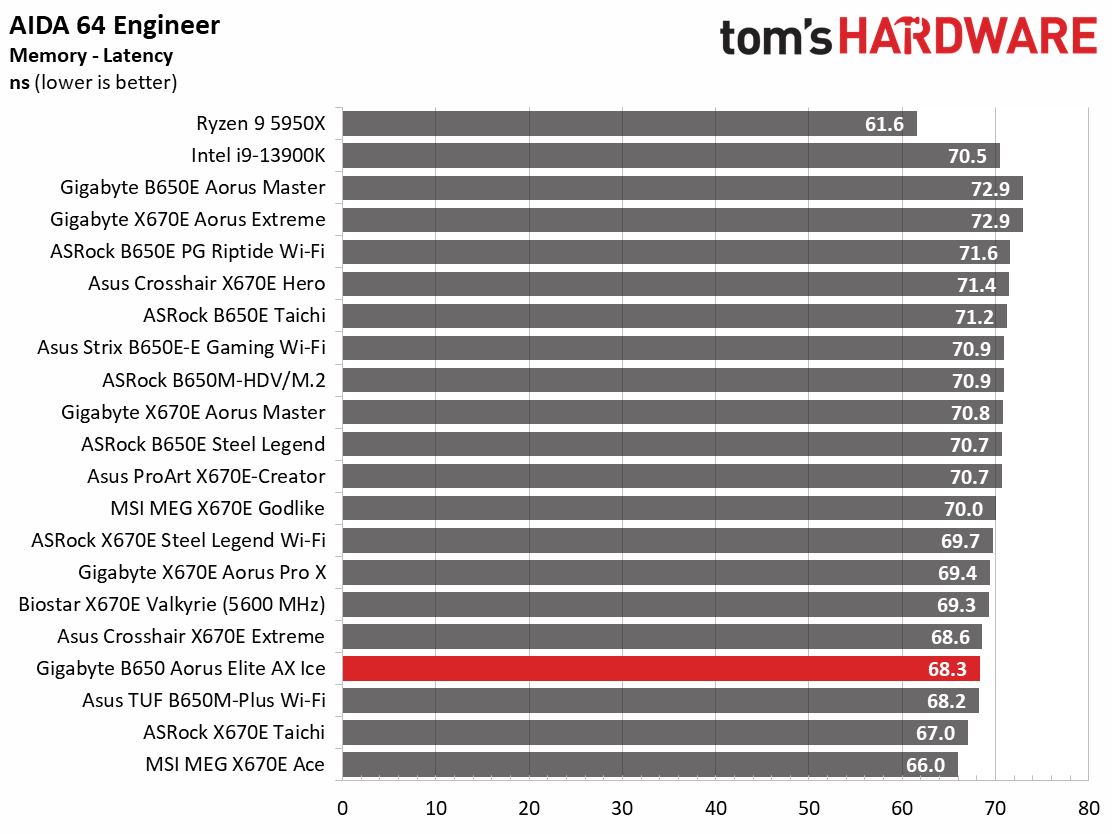
In our synthetic testing, the B650E Aorus Elite AX was one of the faster boards we’ve tested in this selection of tests. But remember, from top to bottom, there isn’t a significant separation. Mostly, you wouldn’t know the difference unless you were benchmarking. Still, it showed the default BIOS’ configuration is ready for anything.
Timed Applications
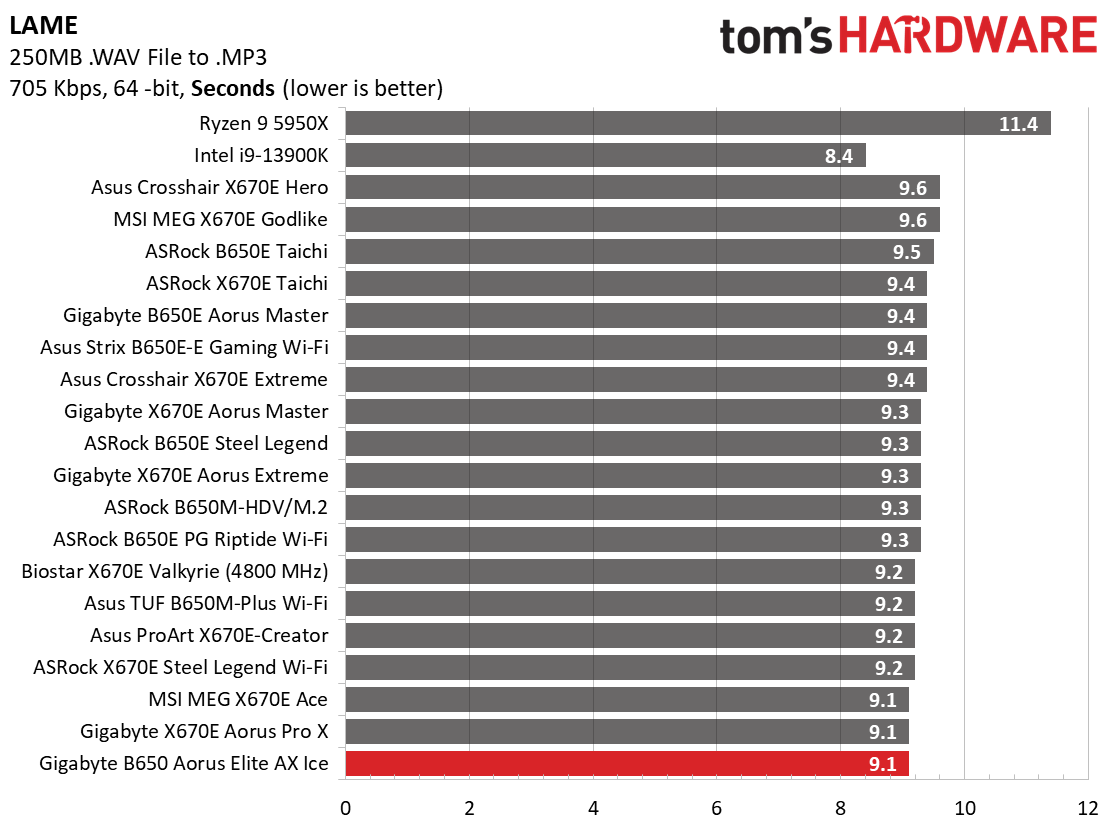
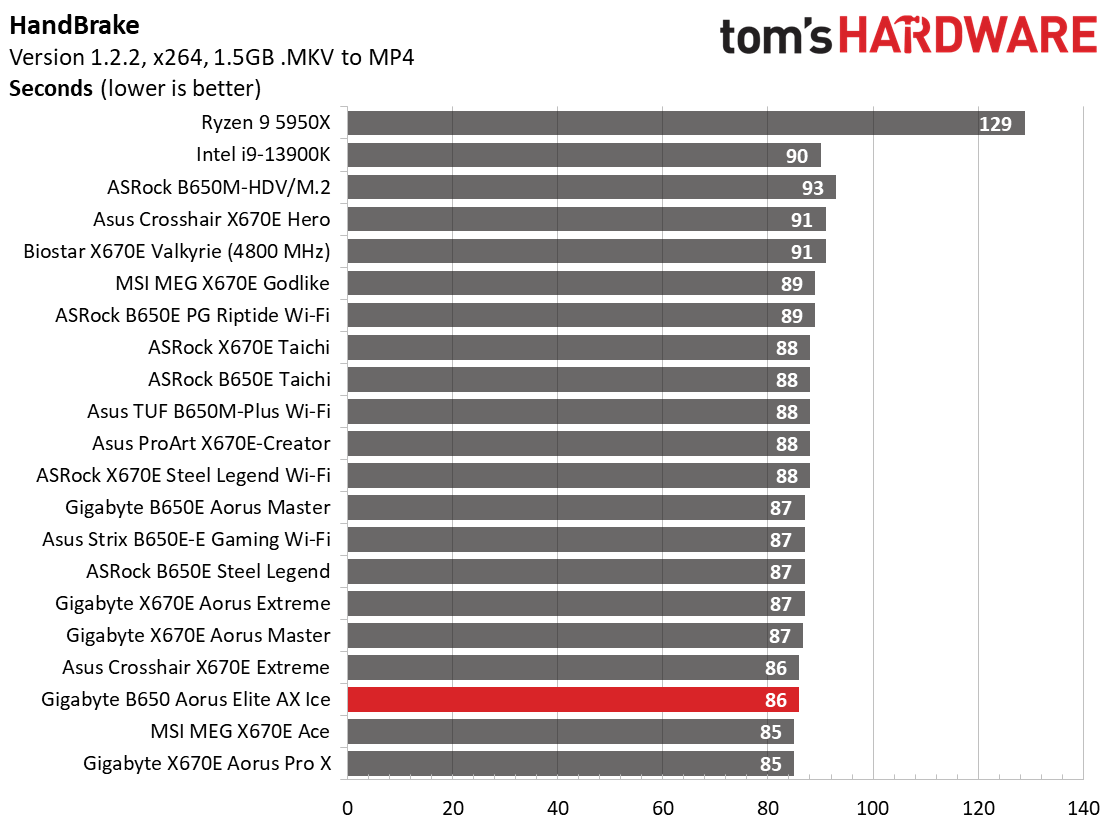
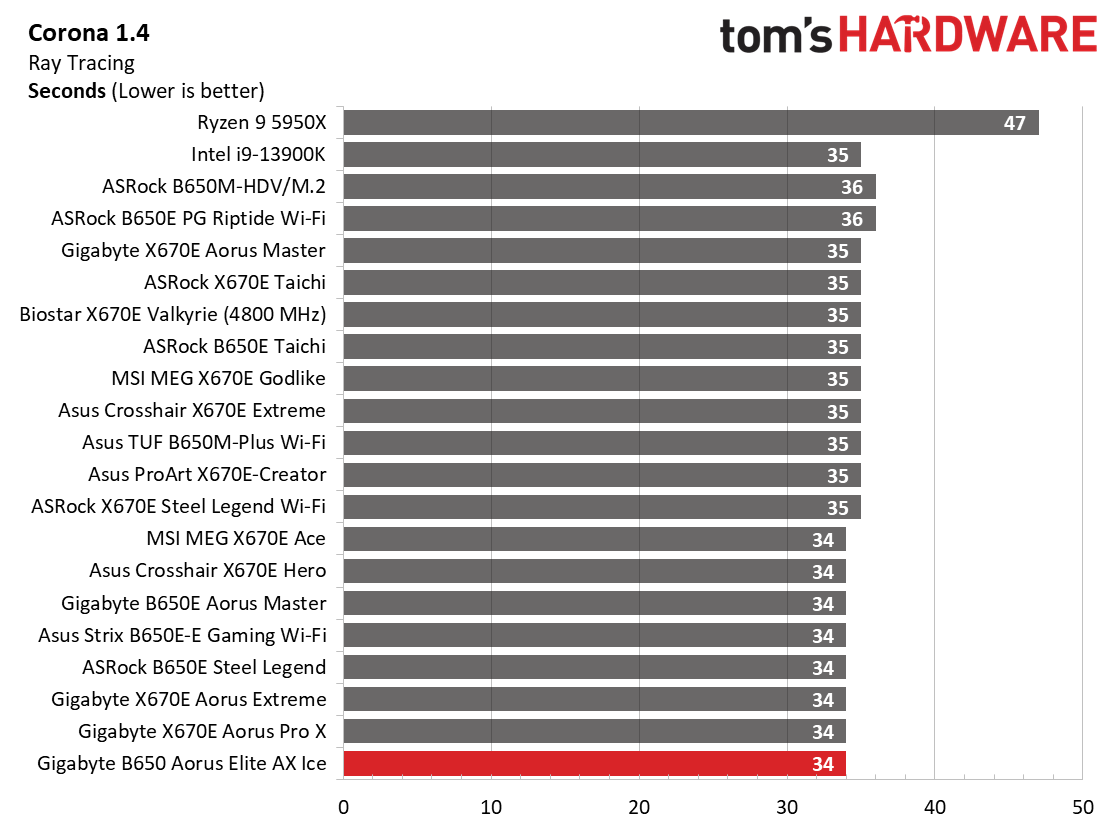
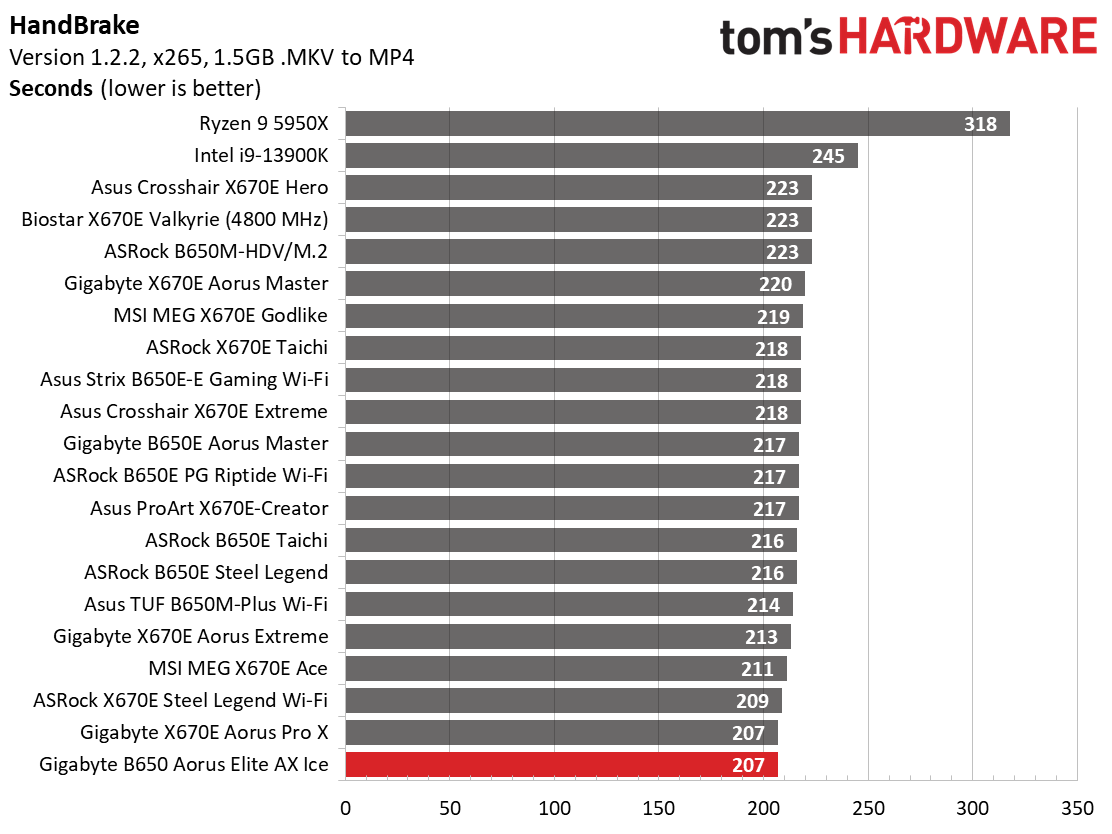
For timed tests, again, this board showed its mettle as one of the fastest tested. We haven’t run into any performance concerns so far!
3D Games and 3DMark


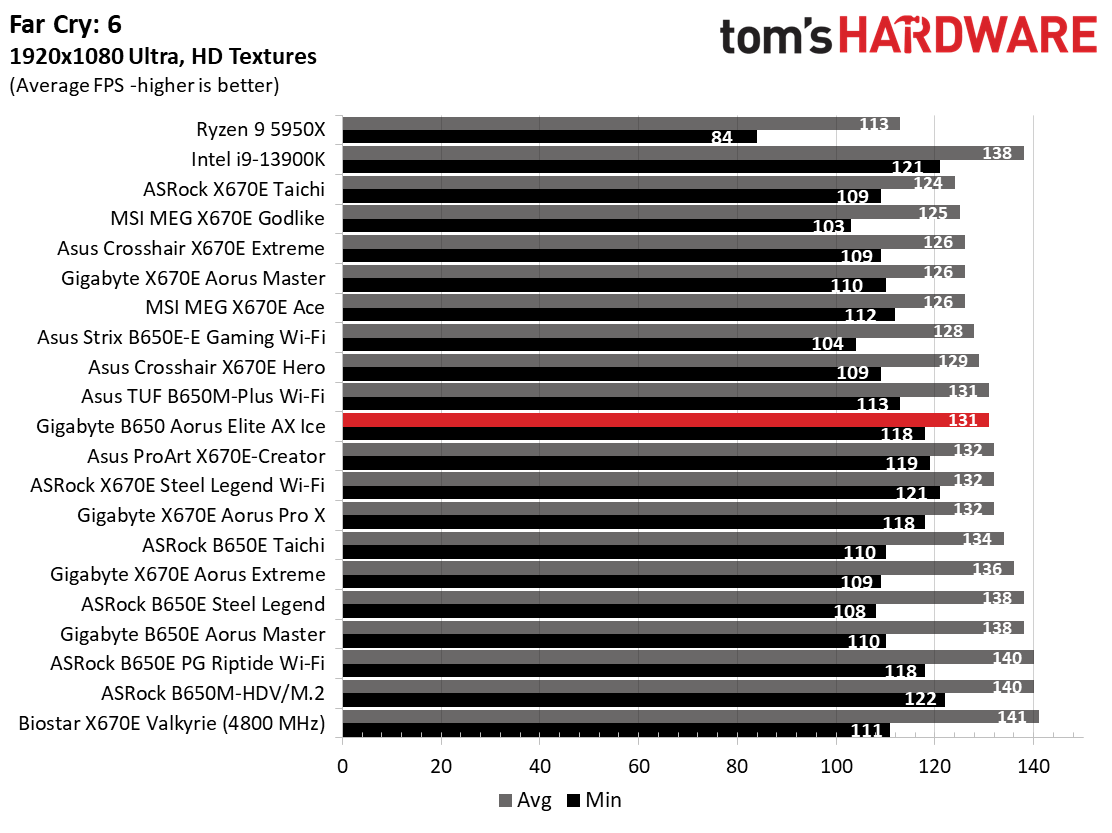
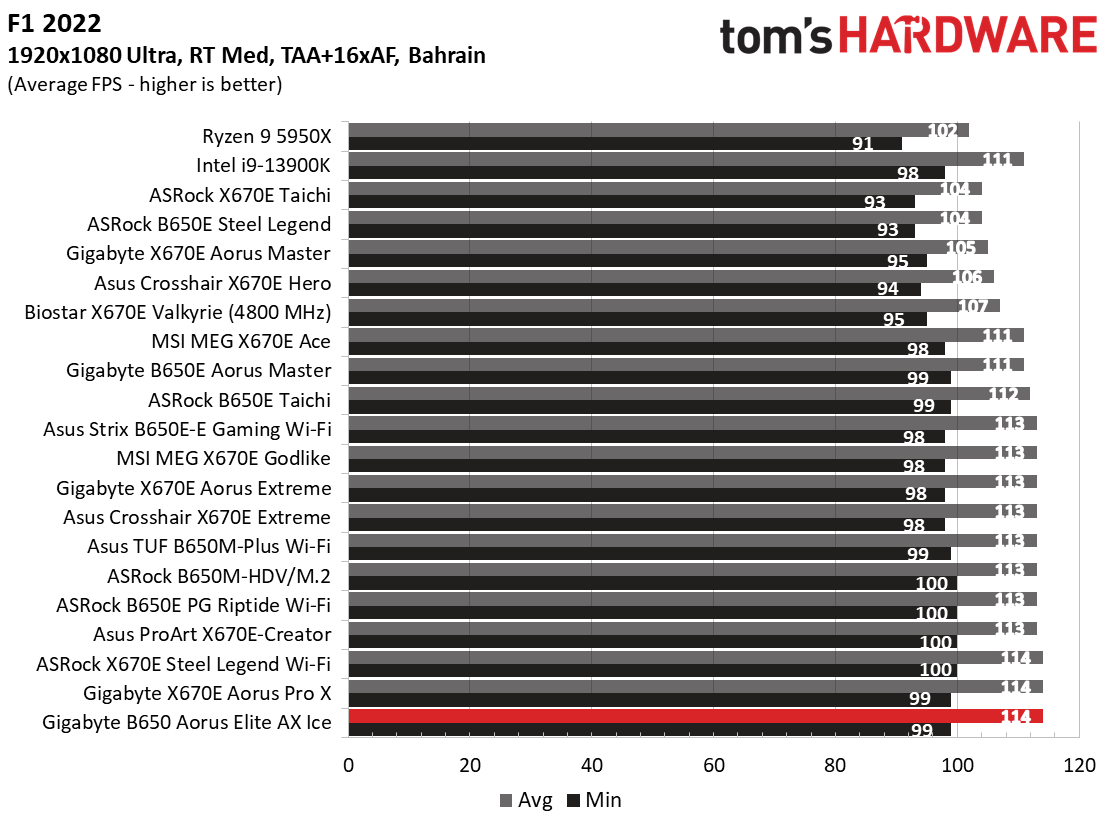
Starting with the launch of Zen 4, we’ve updated one of our games, F1 21 to F1 22, while keeping Far Cry 6. We run the games at 1920x1080 resolution using the Ultra preset (details listed above). As the resolution goes up, the CPU tends to have less impact. The goal with these settings is to determine if there are differences in performance at the most commonly used (and CPU/system bound) resolution with settings most people use or strive for (Ultra). We expect the difference between boards in these tests to be minor, with most falling within the margin of error differences. We’ve also added a minimum FPS value, which can affect your gameplay and immersion experience.
Last, in our gaming tests, the B650 Aorus Elite AX Ice was also average to above average here. In short, it’s an all-around board that performs great out of the box.
Overclocking
Over the last few CPU generations, overclocking headroom has been shrinking (at least on the AMD side) while the out-of-box potential has increased. For overclockers, this means there’s less fun to have. For the average consumer, you’re getting the most out of the processor without manual tweaking. Our goal in this section is to increase the load on the VRMs and see if they can handle the additional stress. Overclocking AMD CPUs can be done in several ways (all-core or adjusted PBO values). But for simplicity’s sake, we just went with an all-core overclock of 5.4 GHz with 1.30V to increase the power output.
Get Tom's Hardware's best news and in-depth reviews, straight to your inbox.
Since our approach is to add power through all cores, we simply raised the CPU multiplier to 54x, manually set the voltage to 1.30V, and adjusted LLC to minimize vdroop. AMD states the sweet spot is around DDR5-6000 on the memory side, so we used the Kingston Fury kit, set the AMD EXPO profile, and checked for stability.
Overclocking on this board proved simple and worked the first time we set the voltage. Granted, we’re not pushing things too far, but there’s undoubtedly some headroom, and you’re only limited by cooling, regardless of the power delivery specifications.
On the memory side, we dropped our Kingston Fury Beast DDR5-6000 kit into the system, enabled XMP, and tested it without issue, as expected (pictured above). Like the X670 Aorus Pro, we recently looked at, our DDR5-7200 and DDR5-8000 kits did not work. They were not on the QVL, and quite frankly, we’ve never been able to reach DDR5-8000 with this processor.
Power Consumption / VRM Temperatures
We used AIDA64’s System Stability Test with Stress CPU, FPU, Cache, and Memory enabled for power testing, using the peak power consumption value. The wattage reading is from the wall via a Kill-A-Watt meter to capture the entire PC (minus the monitor). The only variable that changes is the motherboard; all other parts remain the same. Please note we moved to use only the stock power use/VRM temperature charts, as this section aims to ensure the power delivery can handle the chip even when overclocked. Generally, we’re using less power to get more clocks, and those datasets are more novel than useful. We’re also temperature-limited on the processor, so adding more power isn’t possible without increased throttling.
Power use was a tale of two states. At idle, it sipped on power, running around 67W. During load testing, power peaked at 295W, just 2W behind the highest we’ve recorded for the platform. Gigabyte’s latest BIOS seems to be tuned well and at least let our CPU shine. It is not one of the more efficient boards we’ve tested, but it’s hard to discern among the average.

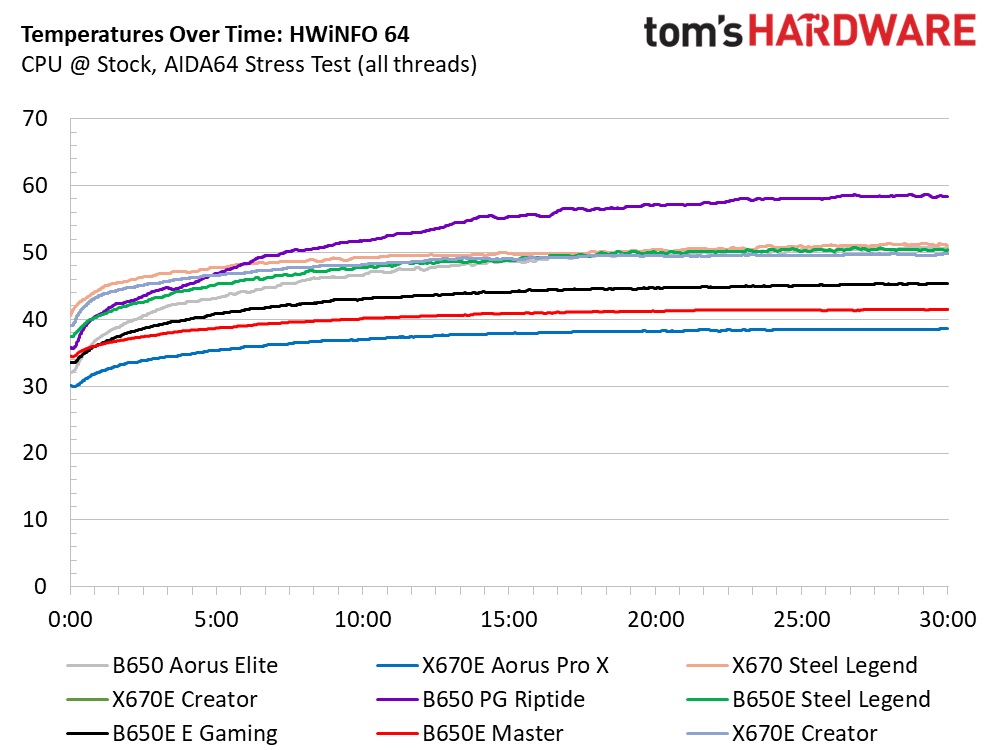
VRM temperatures on our board were kept in check by the large VRM heatsinks. With the power delivery below, I expected them to run a lot warmer. But the heat pipe-connected sinks kept their cool against a constant 200W (stock) for the duration of the stress test.
Bottom Line
The Gigabyte B650 Aorus Elite AX Ice is a solid budget-class motherboard with a unique ice/white appearance. It’s not a refresh board, so you miss out on Wi-Fi 7, but otherwise, it has most of the bells and whistles users are looking for. You get three M.2 sockets, four SATA ports, high-speed memory support, three full-length PCIe slots, and more. Even better, it performed very well in our test suite.
There are a lot of boards vying for your dollars around the $230 price point. Each has something over the other but only sticks out as the one to pick if you need to save money, as most are less expensive. ASRock’s venerable Steel Legend sits at $199.99, with the MSI MAG B650 Tomahawk Wi-Fi at $219.99 (you can find this on sale for under $200). Asus’ ROG Strix B650-A Gaming is also a valid option, but it is pricey when not on sale ($259.99). None of these have a white PCB, but they have a PCIe 5.0 x16 slot for what little that’s worth today.
If you’re in the market for a budget motherboard for AMD AM5 processors and would like to buy a lighter or white motherboard, the B650 Aorus Elite AX Ice is one of the only options in the budget space. But don’t worry; it has plenty of features and is one of the fastest boards we’ve tested. It should be on your shortlist, especially if your build theme needs that cool, icy appearance. If not, there are less expensive options available from both Gigabyte and other partners.
MORE: Best Motherboards
MORE: How To Choose A Motherboard
MORE: All Motherboard Content

Joe Shields is a staff writer at Tom’s Hardware. He reviews motherboards and PC components.
-
APJS There is a new Asrock B650 (No E) Steel Legend WIFI motherboard with M.2 Gen5 and Pcie Gen5. It also sports an Alc4082 it's also an All White board.Reply
Maybe Tom's Hardware should have look at it.

